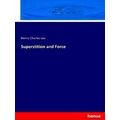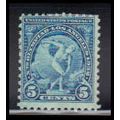Ilkirr, ''Bluey' - bark painting of a kangaroo - Aboriginal art postcard
- Condition : Used
- Dispatch : 2 Days
- Brand : None
- ID# : 137603818
- Quantity : 1 item
- Views : 293
- Location : United Kingdom

- Seller : justthebook (+1703)
- Barcode : None
- Start : Tue 10 Mar 2015 00:31:30 (BST)
- Close : Run Until Sold
- Remain : Run Until Sold
More Listings from This Seller view all
Seller's Description
- Art Postcard
- Work of art title: Bark painting of a kangaroo
- Artist (if known): 'Bluey' Ilkirr of the Gunwinggu Tribe, Oenpelli, NT, Australia
- Media or other details: painting on bark
- Publisher / Gallery: Northern Territory Souvenirs Pty Ltd.
- Postally used: no
- Stamp & postmark details (if relevant): n/a
- Size: modern
- Notes & condition details:
NOTES:
Size: 'Modern' is usually around 6in x 4in / 'Old Standard' is usually around 5 1/2in x 3 1/2in. Larger sizes mentioned, but if you need to know the exact size please ask.
All postcards are not totally new and are pre-owned. It's inevitable that older cards may show signs of ageing and use, particularly sent through the post. Any faults other than normal ageing are noted.
Stock No.: A528
------------------------------------------------
Postage & Packing:
Postage and packing charge should be showing for your location (contact if not sure).
No additional charges for more than one postcard. You can buy as many postcards from me as you like and you will just pay the fee above once. Please wait for combined invoice. (If buying postcards with other things such as books, please contact or wait for invoice before paying).
Payment Methods:
UK - PayPal, Cheque (from UK bank) or postal order
Outside UK: PayPal ONLY (unless otherwise stated) please. NO non-UK currency checks or money orders (sorry).
NOTE: All postcards are sent in brand new stiffened envelopes which I have bought for the task. These are specially made to protect postcards and you may be able to re-use them. In addition there are other costs to sending so the above charge is not just for the stamp!
I will give a full refund if you are not fully satisfied with the postcard.
----------------------------------------------
Text from the free encyclopedia WIKIPEDIA may appear below to give a little background information:
*************
Bark painting is an Australian Aboriginal art form, involving painting on the interior of a strip of tree bark. This is a continuing form of artistic expression in Arnhem Land and other regions in the Top End of Australia including parts of the Kimberley region of Western Australia. Traditionally, bark paintings were produced for instructional and ceremonial purposes and were transient objects. Today, they are keenly sought after by collectors and public arts institutions.
The designs seen on authentic bark paintings are traditional designs that are owned by the artist, or his ""skin"", or his clan, and cannot be painted by other artists. In many cases these designs would traditionally be used to paint the body for ceremonies or rituals, and also to decorate logs used in burials ceremonies. While the designs themselves are ancient, the medium of painting them on a piece of flattened bark is a relatively modern phenomenon, although there is some evidence that artists would paint designs on the bark walls and roofs of their shelters.
The modern form of bark paintings first appeared in the 1930s, when missionaries at Yirrkala and Milingimbi asked the local Yolngu people to produce bark paintings that could be sold in the cities of New South Wales and Victoria. The motives of the missionaries were to earn money that that would help pay for the mission, and also to educate white Australians about Yolngu culture (Morphy 1991). As the trade grew, and the demand for paintings increased, leading artists such as Narritjin Maymuru started being asked to mount exhibitions.
It was, however, not until the 1980s that bark paintings started being regarded as fine art, as opposed to an interesting Indigenous handicraft, and commanded high prices accordingly on the international art markets. Nowadays, the value of a fine bark painting depends not only on the skill and fame of the artist, and on the quality of the art itself, but also on the degree to which the artwork encapsulates the culture by telling a traditional story.
The barest necessities for bark artwork are paint, brushes, bark, fixative and a fire.
The material of choice is the bark from Stringybark (Eucalyptus tetradonta). The bark must be free of knots and other blemishes. It is best cut from the tree in the wet season when the sap is rising. Two horizontal slices and a single vertical slice are made into the tree, and the bark is carefully peeled off with the aid of a sharpened tool. Only the inner smooth bark is kept and placed in a fire. After heating in the fire, the bark is flattened under foot and weighted with stones or logs to dry flat. Once dry, it is ready to paint upon.
Earth pigments—or ochres—in red, yellow and black are used, also mineral oxides of iron and manganese and white pipeclay, or calcium carbonate. Ochres may be fixed with a binder such as PVA glue, or previously, with the sap or juice of plants such as orchid bulbs.
After the painting is completed, the bark is splinted at either end to keep the painting flat. A fixative, traditionally orchid juice, is added over the top.
type=printed postcards
theme=artists signed
sub-theme=art
number of items=single
period=1945 - present
postage condition=unposted
Listing Information
| Listing Type | Gallery Listing |
| Listing ID# | 137603818 |
| Start Time | Tue 10 Mar 2015 00:31:30 (BST) |
| Close Time | Run Until Sold |
| Starting Bid | Fixed Price (no bidding) |
| Item Condition | Used |
| Bids | 0 |
| Views | 293 |
| Dispatch Time | 2 Days |
| Quantity | 1 |
| Location | United Kingdom |
| Auto Extend | No |




 for 1 item(s)
for 1 item(s)

















